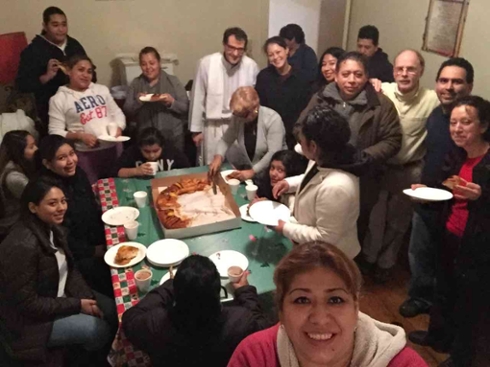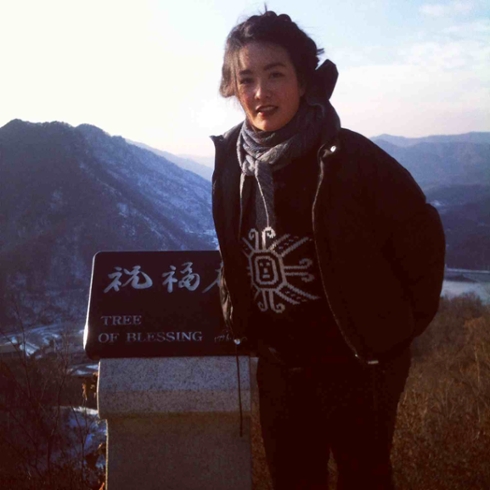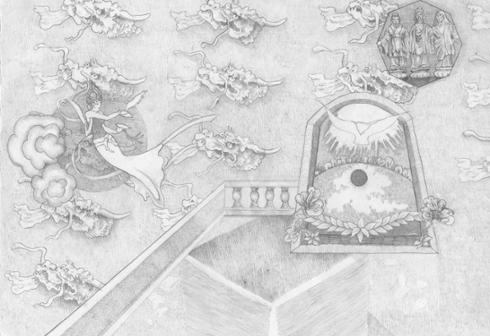Tags
"religion"
St. Pauls Lutheran Church: Ava Kamb, Winter Shadow 2016

It would be impossible for me to define an average day during my externship in Brooklyn, New York this past January, as every day I engaged in activities as diverse as writing liturgy to learning how to handle a cordless drill. I shadowed Ben McKelahan, a Reed alumnus who works as a Lutheran pastor in Williamsburg, Brooklyn, serving both a Spanish-speaking immigrant population and Parables, a young adult artistic congregation. Part of his job involves bridging the two communities (who share the space of St. Paul’s Lutheran Church) in a neighborhood that is undergoing gentrification.
This externship gave me the opportunity to develop my understanding of religion in both an academic and a personal sense. At the start, I found church life foreign and abstract, as I did not grow up religious and my understanding of Lutheranism came from a movie and a couple of texts I read before flying to New York. But throughout the week I was able to learn quickly through lengthy conversations with Ben and through working with the various communities that make up the church in Brooklyn. While studying the bible with Lutheran pastors, shaking maracas at a Parables spiritual dance party, and sharing chocolate de maíz with immigrants from the Dominican Republic as they described their favorite psalms, I began to understand what it means to be part of the Lutheran church community, and each day I was struck by the warmth and energy of everyone with whom I interacted. I was curious to see how God becomes present in people’s day-to-day lives, and I think I saw it best in the relationships individuals shared with one another.
Although my future career plans are still hazy at this point, this shadow opportunity unequivocally made me a better student of religion. I have always loved traveling internationally because it gives me the opportunity to grow, explore, and challenge myself in new situations and cultures, and this trip reminded me that I can have these same experiences in my own backyard (so to speak) if I am willing to step outside of my comfort zone. I want to extend a huge thank-you to Ben for allowing me to shadow him and putting up with my endless questions, to Hannah for offering me a bed in her apartment, and to the other communities I spent time with, who welcomed me into their conversations, homes, and lives however briefly – I am very grateful.
Continue reading St. Pauls Lutheran Church: Ava Kamb, Winter Shadow 2016
Art and Seoul: Kaori Freda, Winter Fellowship for International Travel

I am a senior art major who had the pleasure of traveling to Seoul during winter 2014 under the auspices of the Presidents Winter International Travel Fellowship. There, I stayed at the Unification Church Cheongpyeong holy grounds for a week taking photographs, making rubbings, and conducting on-site research. I’m intrigued by the ways in which this specific site of pilgrimage manipulates the movements of the body and mind and offers church members a tantalizing promise of eternal spiritual salvation. The Unification Church, also known as the Family Federation for World Peace and Unification, is the church of an international Christian religion. Founded in South Korea in 1954 by Reverend Sun Myung Moon, the church seeks to establish a Kingdom of Heaven on Earth. The church been criticized for its cultish practices, which include mass arranged marriages. The Unification Church directs its churchgoers to Cheongpyeong, located in Seoul. Although I am an avid nonbeliever, Moon arranged my parent’s marriage and I have unwillingly gone to Cheongpyeong multiple times in my childhood. This project sought a departure from my past with the religion by willfully confronting my memories on-site and creating artwork in order to move forward and grow both as a person and an artist.

At Cheongpyeong, frigid weather gave hazy form to my breath as I exhaled. Each morning I bundled up before trekking up the Church’s holy mountain, making rubbings along the way. This mountain plays a crucial role as a site of pilgrimage and a harbinger of hope for what the church members conceive as their salvation and pathway to paradise. As they climb the mountain at daybreak during their religious training, the churchgoers pay their respects to holy trees and water imbued with spiritual energy. There is even a place called “Holy Water” where water bubbles and streams from the rocks for church members to quench their thirst as they trek up to the mountain top, not unlike the story of Moses striking the rocks and calling forth water in Numbers 20 in the Bible. Given that the foundation of Unificationism derives from a mishmash of religions including Christianity, I really wouldn’t be surprised if this reference to the Bible stood at the forefront of Moon’s mind as he constructed space and ritual at Cheongpyeong. These religious nodes would blend easily into the surrounding landscape if not for the fact that they are circumcised by a stone ring and marked with stone tablets incised with titles like “Tree of Blessing,” or “Tree of Life” in flowing calligraphic script. Church members believe that their holy ancestors and the spirits of the mountain flutter between the branches of these trees, gazing benevolently down at those who pray with devotion. In addition to these daily pilgrimages, they are confined within a strict itinerary in hopes of purifying their ancestors and exorcising evil spirits from their bodies. Although the strength of their piety is admirable, I’m dubious as to the amount of truth in such claims, especially given that Moon (who dubbed himself the Messiah) and his “Holy” family practiced corruption, domestic violence, amongst other sins. The leaders of the church certainly do not practice the values they preach. This untrustworthiness fractures their constructed divinity and places doubt onto the purity of the religious practices to which their followers adhere.
